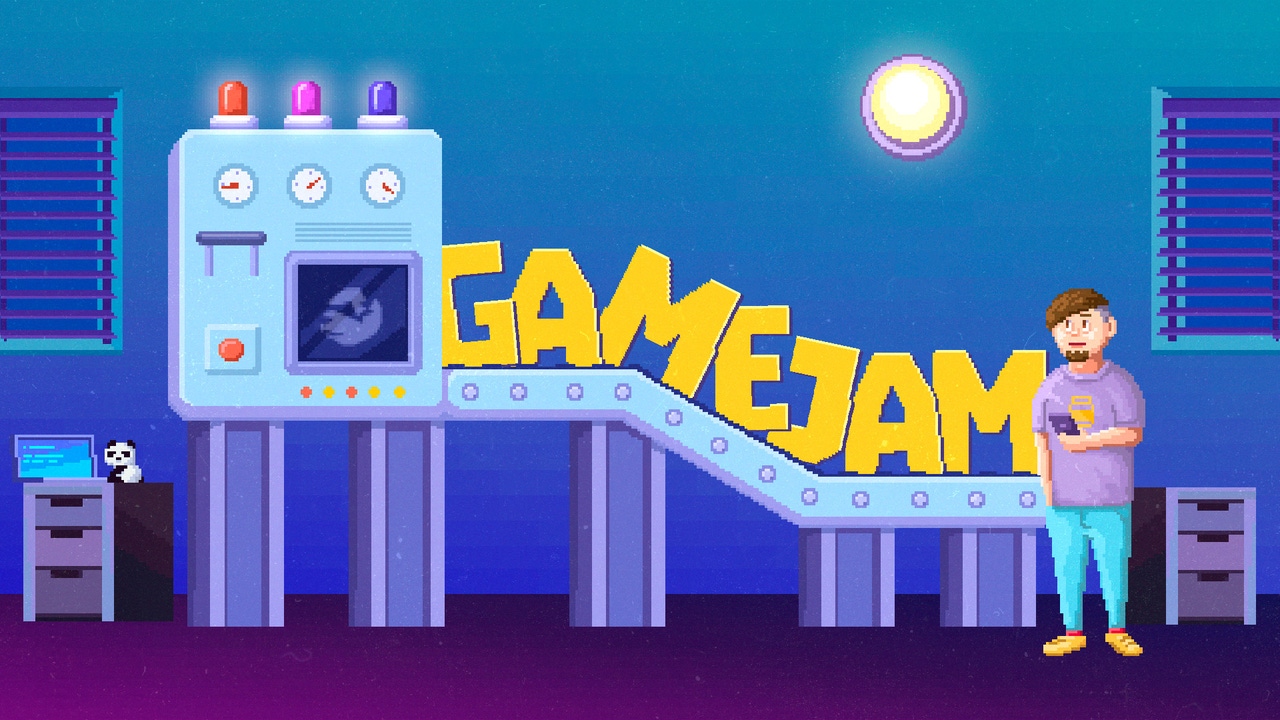
At Pixonic (MY.GAMES), we host game jams in a range of formats every year. In this post, we’ll explore the pros and cons of each game jam format, how to prepare, plan, promote, and conduct the jam itself, tackle post-jam support, and provide more insights!
Organizing a game jam within a company is akin to setting up a sports competition. You need enticing prizes, clear award categories, and an atmosphere that's both friendly and competitive. A game jam is also athletic in nature because participating without preparation and honed skills can be challenging, though not impossible. Development speed and proficiency with tools are crucial, so it's best not to attempt learning a new engine or technology during the event.
These organizational costs are weighed against some pretty amazing benefits – because participating in a game jam enhances skills across all facets of game development simultaneously. Within a limited timeframe, teams can create a fully functional product that real players can engage with and provide feedback on. Additionally, the completed project can be added to a portfolio, used to test hypotheses or core mechanics, or simply used for the bragging rights: "look what I accomplished in just 2 days!"
When everything is set up correctly, the teams are there, and the necessary skills are in place, the competition becomes truly enjoyable. And what’s the secret ingredient for the successful game jam? Naturally: fun.
We’ll begin by discussing what happens behind the scenes of each jam – what it takes to organize a successful event.
The insights in this post were provided by Dmitry Ulitin, Senior Game Designer on the War Robots project, and Dmitry Osipov, Lead Project Manager on the War Robots project.
Preparing for a jam
The entire jam preparation process can be divided into four key stages:
Preparation and planning
Announcement and communication
Jam!
Support after the jam
Stage 1: Planning
The first step is to clearly determine the date of the event without revealing it in advance, as the precise timing of the announcement can also play a crucial role. Initially, the date acts as a deadline for the organizers themselves, helping to structure the entire preparation process.
Planning encompasses everything that happens behind the scenes of the event, from merchandise and potential prizes to analyzing possible participants and selecting the venue, whether online or offline. It’s advisable to allocate ample time for planning, especially if event organization is not your primary occupation.
Jam formats
Game jams come in various formats. One of the most popular is the two-day format (primarily thanks to Ludum Dare jam). This format involves developing a project over two days with limited resources, or over three days at a more relaxed pace.
There are also longer formats, such as week-long or month-long jams. These can be conveniently found on specialized forums, the "Jams" section of itch.io, and thematic sites or subreddits.

Game Jams page in itch.io
Game Jams page in itch.io
Within our company, we have experimented with several formats:
Pitching and creating a game concept.
No need to make a build, and the event is short – from a few hours to a day. Here, the team presents one or more concepts as small one-page documents, which can then be used for the company's needs or simply left to their creators. This is a very fast and easy format with a simple entry point.
Pros:
Fast and easy
Anyone can participate, no need for tool knowledge
Inexpensive for the company
Many concepts can be quickly generated for further development
Cons:
No chance to physically interact with the prototype
The way an idea is presented can overshadow its potential
Evaluation depends on presentation skills and speaker charisma (especially in the case of pitches)
A long format for creating a build.
With this one, participants can compete both on a team or alone and will create a full-fledged build in their free time from work. The final project can be used in a portfolio or for the company's needs – this is a decision you’ll make together.
Pros:
Time to learn the tools
Real prototypes, not just game descriptions
More opportunities to polish the game
Time to prepare a presentation
Cons:
More motivation needed due to overtime and the long jam duration
No time off for working on the prototype
Potential challenges in maintaining work-life balance
A quick format for creating a build.
This format resembles Ludum Dare, but with some changes: two days of continuous work on a project with a presentation at the end. This differs from Ludum Dare like so: there is no voting for the topic, and it’s determined before the jam, and participants can use any assets that help meet the deadline. Also, unlike Jam, we have a limit on the number of participants on a team (no more than 4). Of course, the best thing is that participants are given one additional day off from work.
Pros:
Real prototypes
Constraints boost creativity





































